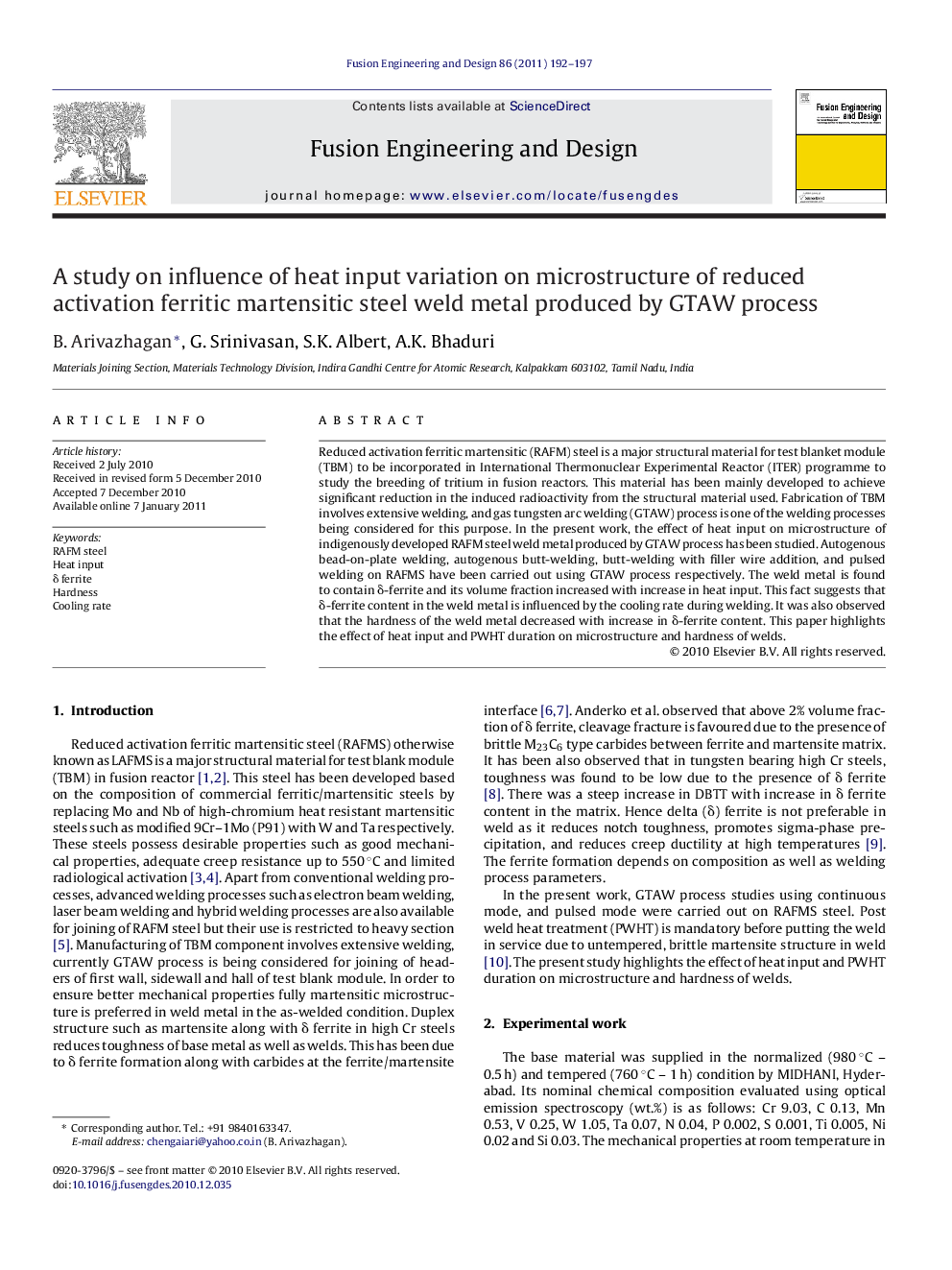| Article ID | Journal | Published Year | Pages | File Type |
|---|---|---|---|---|
| 272579 | Fusion Engineering and Design | 2011 | 6 Pages |
Reduced activation ferritic martensitic (RAFM) steel is a major structural material for test blanket module (TBM) to be incorporated in International Thermonuclear Experimental Reactor (ITER) programme to study the breeding of tritium in fusion reactors. This material has been mainly developed to achieve significant reduction in the induced radioactivity from the structural material used. Fabrication of TBM involves extensive welding, and gas tungsten arc welding (GTAW) process is one of the welding processes being considered for this purpose. In the present work, the effect of heat input on microstructure of indigenously developed RAFM steel weld metal produced by GTAW process has been studied. Autogenous bead-on-plate welding, autogenous butt-welding, butt-welding with filler wire addition, and pulsed welding on RAFMS have been carried out using GTAW process respectively. The weld metal is found to contain δ-ferrite and its volume fraction increased with increase in heat input. This fact suggests that δ-ferrite content in the weld metal is influenced by the cooling rate during welding. It was also observed that the hardness of the weld metal decreased with increase in δ-ferrite content. This paper highlights the effect of heat input and PWHT duration on microstructure and hardness of welds.
